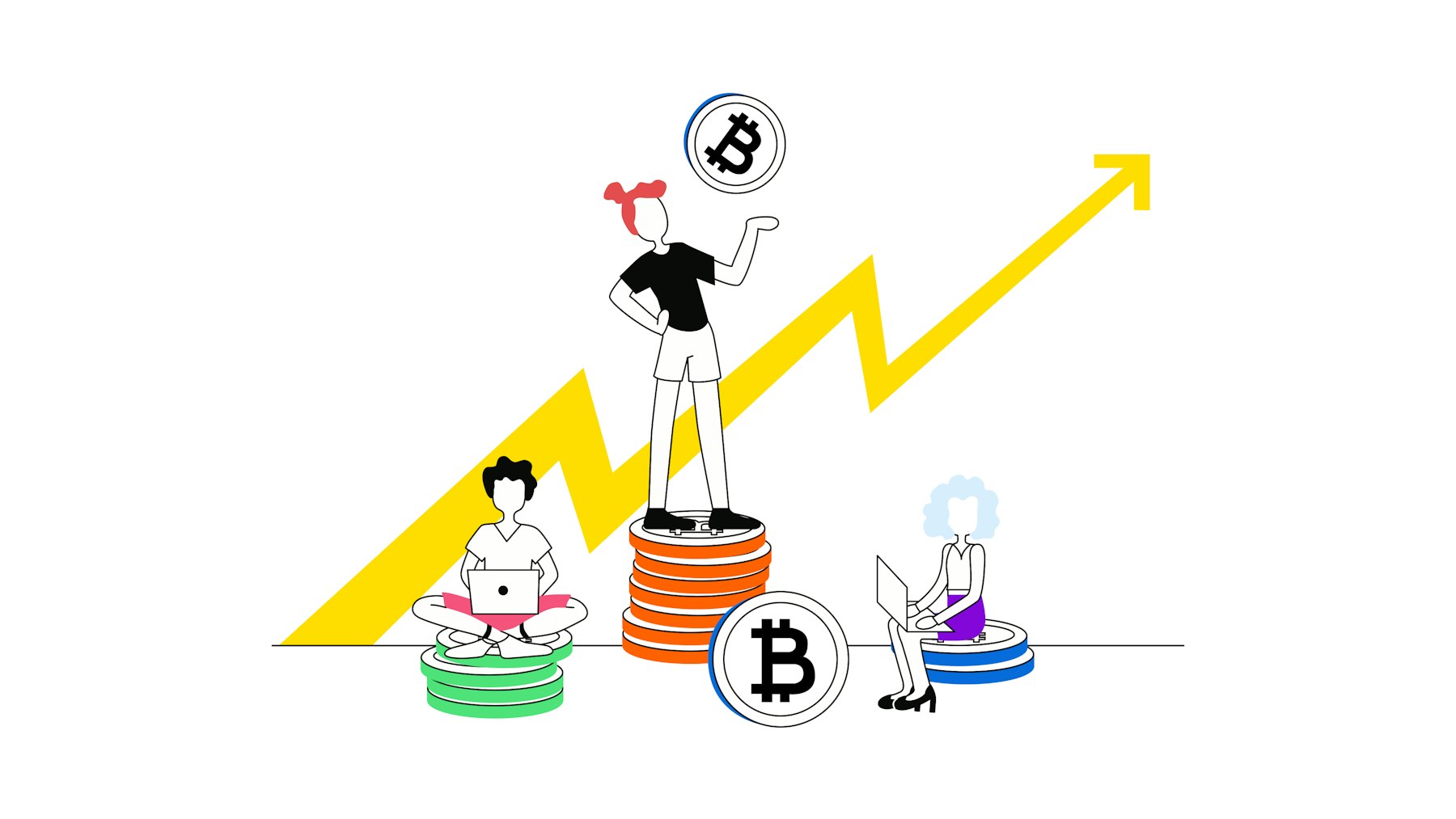What are the practical applications of market capitalisation?
Market cap lets you compare cryptocurrencies or companies (stock prices). This comparison provides an initial clue as to how sensible an investment might be and what risks are involved. Cryptocurrencies are categorised by market cap into three groups, just like companies traded on the stock exchange:
Large-cap cryptocurrencies: These include all cryptocurrencies with a market cap of over $10 billion. Among the most well-known are Bitcoin, Ethereum and Ripple (XRP). In July 2025, Bitcoin reached a market cap of over $2 trillion for the first time. Compared to other cryptocurrencies, Bitcoin is considered a lower-risk investment. It has already shown growth strength in the market and has high liquidity. This means the price doesn’t drop significantly even if many investors sell and take profits.
Mid-cap cryptocurrencies: These have a market cap between $1 billion and $10 billion. They offer high growth potential but are also seen as riskier investments.
Low-cap cryptocurrencies: With a market cap of less than $1 billion, these cryptocurrencies experience the highest price volatility and are considered high-risk investments.
In brief: Market capitalisation is considered a key metric! With it, you can compare the total value of different cryptocurrencies. Large-cap cryptocurrencies carry the least risk in this regard. In contrast, low-cap cryptocurrencies experience high price volatility, which means they carry high risk.
What role does market capitalisation play in evaluating crypto?
Market capitalisation plays an important role in the evaluation of cryptocurrencies. It provides you with valuable insights into the size, growth potential and market stability of a digital currency. Market capitalisation can be helpful in assessing the following aspects:
Size
Market cap tells you how large a cryptocurrency is compared to others in the crypto market. A larger market capitalisation indicates broader acceptance and stability of a cryptocurrency, whereas smaller market caps may point to less established projects.
Risk
You can use market capitalisation to assess the risk of an investment. Cryptocurrencies with a high market cap are generally considered less risky than those with a low market cap.
Growth potential
While a high market cap suggests a certain level of maturity and stability, cryptocurrencies with a medium to low market cap may offer greater growth potential.
Market comparisons
Market capitalisation allows for comparisons between different cryptocurrencies, regardless of their price per token. This helps form a more realistic picture of the relative size and importance of projects in the crypto market. Bitcoin is considered the leading currency in the crypto market due to its high market cap. In the crypto space, market cap comparisons are therefore often aligned with Bitcoin.
Market liquidity
A higher market cap often indicates better liquidity. That means it's easier to trade large volumes of the currency without significantly affecting the market price.
While market capitalisation is an important and revealing factor in evaluating a cryptocurrency, you shouldn’t base your investment decisions solely on market cap. To make an informed investment decision, you should incorporate other key metrics into your assessment.
Other factors for evaluating cryptocurrencies
Before deciding to invest in a specific cryptocurrency, like Ethereum or Tether, market cap can help you evaluate the currency. However, other factors and metrics are also important to make a well-informed investment decision.
Trading volume
Trading volume shows how much of a particular cryptocurrency has been traded within a given time period. A high trading volume may indicate strong interest in the crypto market and good liquidity. A low volume, on the other hand, may signal a lack of interest or liquidity issues.
Liquidity
Liquidity tells you how easily you can buy or sell a cryptocurrency. High liquidity makes it easier to enter and exit positions at fair prices without long waiting times.
Volatility
Volatility indicates how much a cryptocurrency's price fluctuates over a certain period. Currencies with high volatility carry higher risk, but also offer greater potential for returns.
Active addresses
The number of active addresses sending or receiving transactions within a given timeframe can be an indicator of the usage and adoption of a cryptocurrency.
Technology development
The growth and development of the underlying blockchain – including the number of developers, commits and general activity – can influence the longevity of a cryptocurrency.
Security
The consensus mechanism (e.g. Proof of Work or Proof of Stake) and the blockchain's security measures are key to evaluating its resistance to attacks and the sustainability of the network.
Tokenomics
The token economy, including total supply, distribution, emission rate and mechanisms such as staking rewards, is important for the long-term development of a cryptocurrency.
Regulations
The legal situation and acceptance by businesses and governments can have a major impact on the success and adoption of a cryptocurrency.
Looking beyond just price or market cap, these metrics offer a deeper understanding of a cryptocurrency and can support more informed investment decisions. To properly evaluate cryptocurrencies, it’s important to consider market capitalisation alongside other key factors.
Conclusion: The importance of a holistic evaluation approach for cryptocurrencies
Market capitalisation is a fundamental concept in the crypto world and the stock market, reflecting the total value of all issued coins or company shares. It serves as an important indicator in evaluating a cryptocurrency and allows you to compare the relative significance of different currencies. Alongside market cap, factors such as trading volume, liquidity and volatility are crucial for gaining a comprehensive understanding of a cryptocurrency and making a well-considered investment decision.
Are you interested in the topic of cryptocurrencies? Then we recommend checking out our additional articles to dive deeper into the world of digital currencies.
